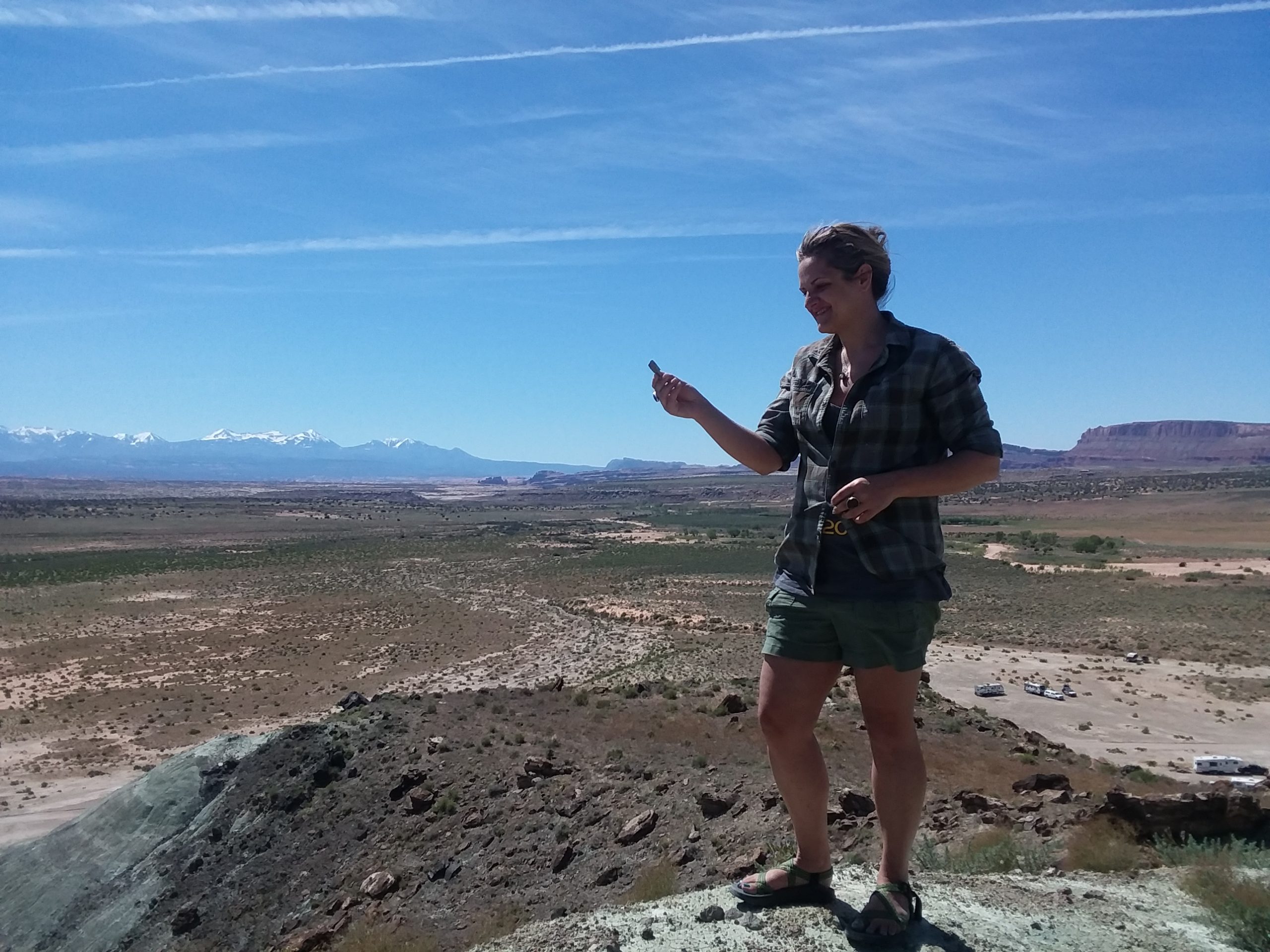Some information may be outdated.
The annual meeting of the Utah Friends of Paleontology exemplified the meaning of “edutainment.” Among a bounty of donuts and cookies, adults and kids alike were educated and entertained at this year’s gathering, which took place in Moab.
Paleontology investigates how complicated events have and continue to shape the rise and fall of species of over millions of years. In the Moab geographical region, paleontology is a career and a hobby.
The Utah Friends of Paleontology (UFOP) met from June 7 through June 9 at the SpringHill Suites conference room in Moab. Members and the public learned among other things how the size of a fossilized cochlea, an inner-ear bone, tells us what pitches an extinct animal likely could and could not hear. The longer the cochlea, the more range of hearing.
Presenters from Salt Lake City and Vernal, and as far away as Kentucky, Illinois and Kansas, gave lectures.
This year’s conference T-shirts boasted a graphic of Utahraptor ostrommaysi standing upright and in its full-feathered glory, and with its left foot and large disemboweling claw poised to do its job. This shirt was a reminder that Utahraptor is now the official state dinosaur.
The first Utahraptor specimens were found close to Moab in the Dalton Wells Dinosaur Quarry. Moab Rock Shop owner and dinosaur hunter Lin Ottinger attended a number of the Saturday lectures and is credited with discovering more than one species of dinosaur in the area.
Many of this year’s participants knew they would be visiting this very quarry on a field trip during the conference.
“The historic Dalton Wells (Dinosaur) Quarry is mostly played out now,” said Lee Shenton, the group’s president, “but (for) over 30 years, it famously produced nearly 60 individuals of nine different dinosaur types, including Utahraptor and the armored ankylosaur Gastonia. Whatever is left would be illegal to collect without a permit, because of the scientific (not commercial) value of surrounding sediments and remaining bits of the 125-million-year-old quarry materials. Unfortunately, there are still folks who think they can get something of value out there, so a dozen of our local UFOP members regularly visit the quarry site to monitor it for impacts of vandalism.”
Cat Sartin, an instructor of biological sciences at Fort Hays State University, delivered a talk about her work, which used a microscope to painstakingly scrutinize 476 tiny upper molars of Virginian opossums from the collections of the Smithsonian Museum of Natural History.
She investigated how variations in tooth features can help determine if some fossils indicate new species — and even new genuses — of extinct animals.
“Molars tend to be the most diagnostic of all the teeth in the mammal mouth,” she said.
Another question explored at the conference: How did the extinction event that ended the Permian geological era about 252-million years ago give the dinosaurs, and later the mammals, a chance to rule the earth?
“A gigantic volcanic field erupted 251.9-million years ago in present day Siberia,” explained Dr. Benjamin J. Burger, associate professor of geology at the Utah State University in Vernal.
Apocalyptic levels of carbon dioxide, mercury and sulfur entered the atmosphere and then the oceans.
“During a period of 60,000 to 75,000 years, the Earth underwent a major change … the first victims were the coral reefs … for millions of years afterward, there were no coral reefs on Earth.”
He said that although “97% to 83% of the species living on the planet died … a few made it through.”
Jeanette Matovich, BLM-Utah Youth and Volunteer Programs state lead, and ReBecca Hunt-Foster, Dinosaur National Monument paleontologist and museum curator, spoke about the Uinta Basin Day Camp Paleontology activity, hosted by the Girl Scouts of Utah.
Girl Scout participants work with paleontologists to learn about fossils.
Among other activities, these Girl Scouts compare modern bones to fossil bones and take field trips to the Utah Field House of Natural History State Park Museum in Vernal and Dinosaur National Monument in Jensen.
Other nearby sites visited during the conference were located at Yellow Cat and Doelling’s Bowl. A separate group opted to visit the Hanksville-Burpee quarry.
The online version of this story updated Catherine Sarten’s name to Cat Sarten.
Annual Utah Friends of Paleontology meeting links today’s creatures to those that lived long ago in Moab
“Unfortunately, there are still folks who think they can get something of value out there, so a dozen of our local UFOP members regularly visit the quarry site to monitor it for impacts of vandalism.”
Appreciate the coverage? Help keep local news alive.
Chip in to support the Moab Sun News.





